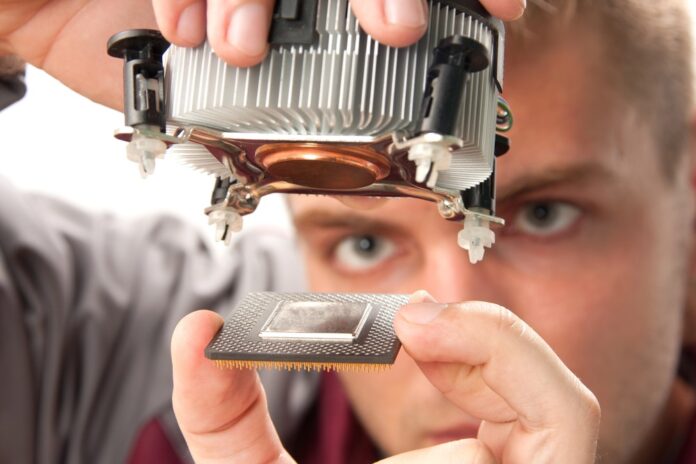We live in a technological era where the adoption and dominance of IoT networks and AI are constantly growing. Therefore, to sustain such growth, electronic components manufacturing and its supply chain have to evolve.
And so, the electronic components industry has become a more dynamic ecosystem than before. It is now in a phase of constantly pushing the boundaries of miniaturization, performance, and functionality. These have further fueled breakthrough technologies in domains ranging from healthcare and consumer electronics to automotive through never-ending innovation.
It is proper to note, however, that it has become even more challenging to manage an ever-changing supply chain for such critical components because it has presented a new set of challenges in the exciting, as well as new opportunities.
Notable Trends in Electronic Components Industry
Several trends are currently pushing the technological advancement within the Electronic Components Industry. The most significant of these trends is miniaturization and integration.
Notably, when it comes to consumer electronics, i.e., smartphones and wearables, the need for the need for compact devices has increased massively. This need for smaller yet highly efficient components has been aided by technological advancements in semiconductor technology. Therefore, advances in semiconductor technology have helped meet this requirement for small yet highly efficient components. This has made technology advance to further help in the development of nanoelectromechanical systems (NEMS) and microelectromechanical systems (MEMS).
Besides miniaturization, integration is also on the rise. Integration here refers to SoC technology processes where several functions are put into one chip, hence reducing the total size of electronic devices.
Other notable trends are:
- Rise of Smart Components, thanks to the Internet of Things (IoT)
- Innovations in power management integrated circuits (PMICs) and energy harvesting technologies for enhanced power efficiency
- The evolution in artificial intelligence (AI) and machine learning (ML) which is facilitating AI Software for business and content creation industry.
- 3D printing for advanced materials and manufacturing techniques.
Key Growth Opportunities in the Electronic Components Industry
As of 2024, these are some of the key growth areas within the electronic components industry.
a) Artificial Intelligence (AI) and 5G Infrastructure
With an estimated current growth of US$8 billion back in 2019, probably hitting US$70 billion by 2026, the AI Chipset market is abuzz, according to EE Times. The key adopters will include industries like automotive – that is, Tesla, healthcare – that is, IBM & ClodMedX, and lastly, consumer electronics.
On the other hand, according to a report from AMECO Research, the 5G RF semiconductor market is likely to reach US$ 39.6 billion by 2030, with a CAGR of 8% during the period from 2022 to 2030. Growth is backed by the global deployment of the 5G network, providing better and more reliable communication.
Basically, AI and IoT are revolutionizing healthcare. With these two at the forefront of the market driving factors, the estimate is that the market will reach $188 billion by 2025. These technologies will be empowered to monitor from anywhere, execute predictive analytics, and facilitate personalized treatment to enhance patient outcomes.
b) Miniaturization and Advanced Packaging
The semiconductor packaging market is expected to grow exponentially to $100 billion by 2025 because of the need for more miniaturized and effective electronic gadgets. Moore’s Law, which has been the guiding rule for the semiconductor industries for decades, states that the rate of doubling transistor densities is once every two years. That sort of growth is now approaching physical limitation.
Against such a backdrop, advanced packaging techniques have increasingly become a means of keeping performance improvements on track. Developers use these techniques to try to achieve better performance and greater efficiency in the next generation of electronic devices.
Problems Facing the Electronic Components Industry in 2024
There are a number of challenges facing the electronic component industry today: supply chains, geopolitical tensions, and computational constraints—all of which affect the production and sales of vital components like semiconductor chips and advanced AI hardware.
-
Supply Chain Bottlenecks
Take the case of Nvidia. The company commands an 80% market share in the global GPU market. However, this company gets its chips produced by Taiwan Semiconductor Manufacturing Corporation (TSMC). Incredibly, the same TSMC provides 90% of the world’s advanced chips, including high-performance processors for AI data centers used by Nvidia. However, the limited semiconductor device fabrication capacity of TSMC devices generates bottlenecks in the supply chain, delaying the availability of these critically required chips.
To this end, TSMC subsidiary Japan Advanced Semiconductor Manufacturing set up a new factory, and TSMC itself established two plants in the state of Arizona. On the other hand, companies like Microsoft, Google, and Amazon are involved in developing custom AI chips to reduce dependency on Nvidia. Finally, the UXL Foundation, along with Intel, also goes out of its way to challenge the dominance of Nvidia through alternative solutions.
The supply of these chips, along with other electronic components, could also be a problem apart from manufacturing. But the good thing is that the number of E-Distributors, such as Jakelectronics, who play a very important role in bridging the gap between manufacturers and end-users, has increased. Some of the good things about E-Distributors are that they have a wide range of components, robust inventory management, and expert technical support. They handily help companies in the process of navigating through this changing landscape and find the components required by them at the exact time.
-
Geopolitical Risks
There are also geopolitical dangers with Taiwan’s strategic position in making AI chips.
Due to the conflicts between the US and China, President Biden recently put export restrictions on AI chips and associated technology to China. In an effort to be less dependent on East Asian manufacturing, the US is committing more than $52 billion to produce semiconductors in the United States under initiatives such as the CHIPS and Science Act.
-
Computational Constraints
As AI models become more powerful, the demand for advanced AI chips increases. The need for these chips is growing four times faster than their algorithmic efficiency. Companies are exploring in-memory computing and incorporating AI algorithms to bridge this gap and enhance hardware performance.
In Summary
The electronic components market is facing a world of fast-paced technological changes and great hardships. As AI becomes more common and 5G is deployed worldwide, the race for new parts is heating up. But then again, there are the problems of supply chain bottlenecks, geopolitical tensions, and computational limitations—those are all big things that need to be overcome.
As noted, E-distributors like Jakelectronics are pivotal in bridging the gap between manufacturers and end-users. They ensure that the latest components are available to drive forward innovations in various sectors, from healthcare to automotive to consumer electronics.
Find a Home-Based Business to Start-Up >>> Hundreds of Business Listings.















































